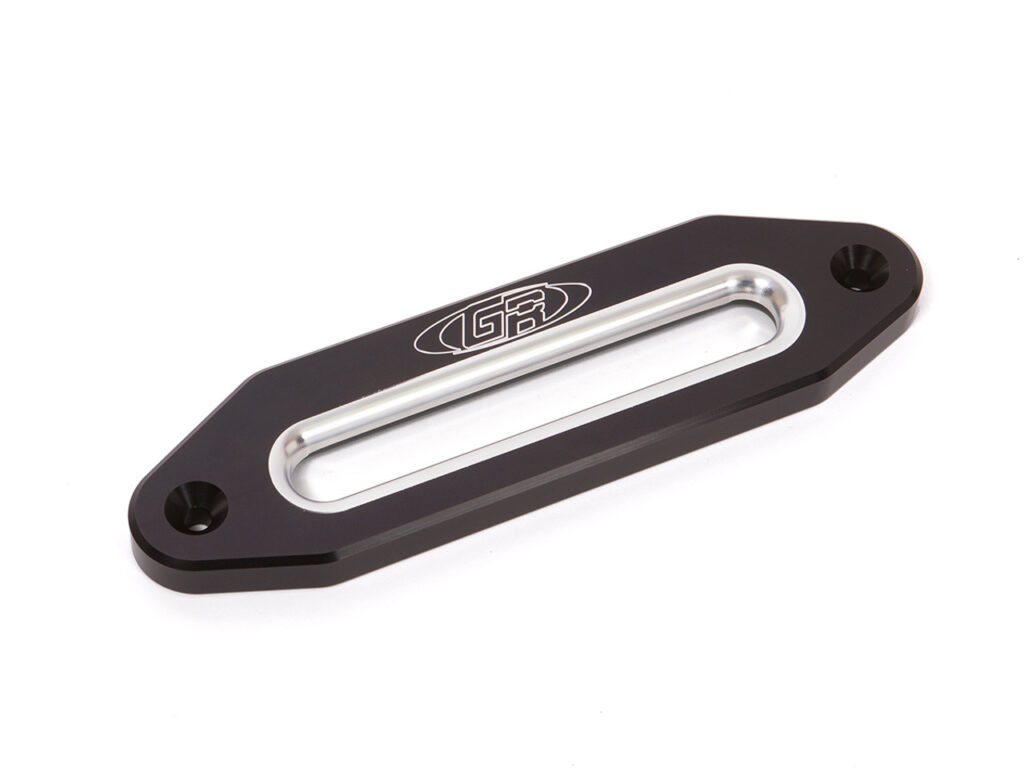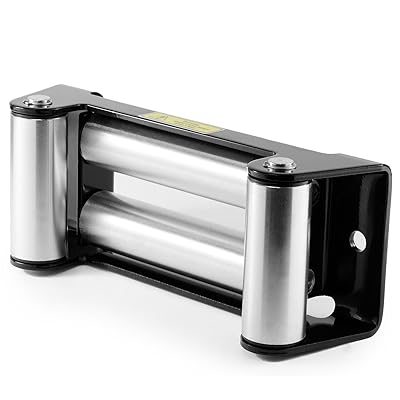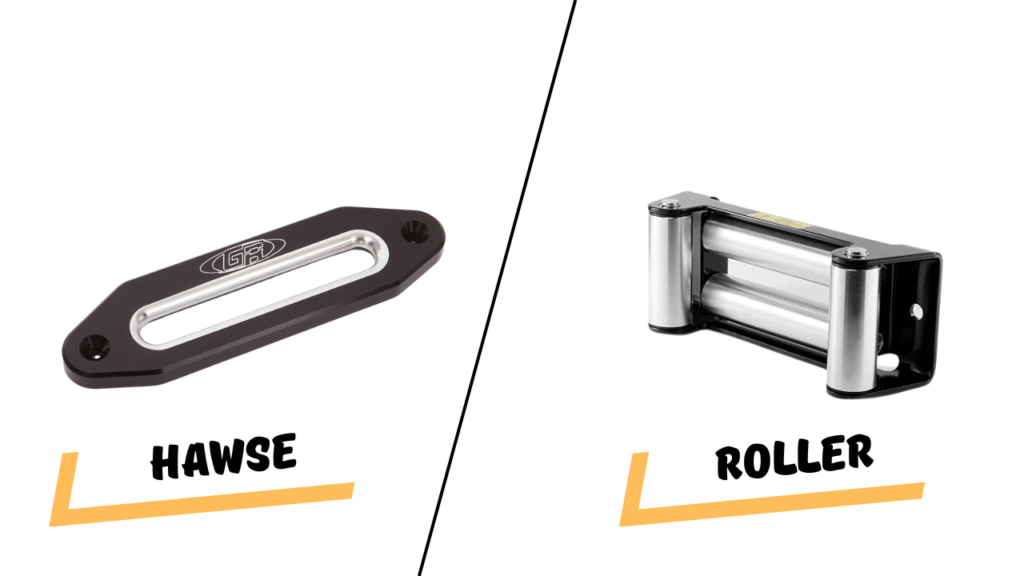When venturing off-road, a winch can be your most valuable recovery tool—but the type of fairlead you use can make a big difference in performance and safety. The two most common types, hawse and roller fairleads, each serve specific functions depending on your winch line and terrain. In this guide, we break down the essential differences between winch hawse and roller fairleads to help you choose the right setup for your off-road needs.
Quick Summary
The primary difference between a winch hawse and a roller fairlead lies in their design and compatibility. A winch hawse is compact and designed for synthetic ropes, minimizing abrasion and improving weight efficiency. In contrast, a roller fairlead uses rolling guides to reduce friction, making it ideal for steel cables and heavy-duty off-road recovery. The choice depends on the type of winch line, terrain, and winching angle requirements.
What is a Winch Hawse?

A winch hawse is a simple, yet essential part of a winch system. It’s a smooth, typically aluminum or steel guide that helps direct the synthetic rope onto the drum.
The primary purpose of a winch hawse is to ensure that the rope feeds evenly and smoothly while reducing the chances of it getting snagged or damaged
Advantages of Using a Winch Hawse
- Reduced Cable Wear: The smooth surface of a hawse minimizes abrasion on the synthetic rope, extending its lifespan. This makes a winch hawse fairlead a key choice for lightweight off-road vehicles using synthetic winch lines, as it reduces strain and prevents damage during recovery operations.
- Improved Cable Management: A winch hawse provides a straightforward path for the rope, making it easier to spool evenly on the drum.
- Lightweight and Compact: Winch hawses are generally lighter and more compact, making them ideal for weight-conscious off-roaders.
What is a Roller Fairlead?

A roller fairlead consists of a rectangular frame with four rollers—two vertical and two horizontal. These rollers guide the winch cable and facilitate its smooth movement during winching operations.
The steel rollers handle heavy loads and high tensions effectively.
Advantages of Using a Roller Fairlead
- Reduced Friction: The rollers significantly reduce friction, making it easier to pull heavy loads and reducing the strain on the winch motor. With its superior friction-reduction capabilities, a roller fairlead is the preferred choice for steel cables and heavy-duty operations, especially when tackling rugged terrains or challenging recovery scenarios.
- Improved Cable Life: Roller fairleads prolong the life of winch cables and synthetic ropes by minimizing friction. They also prevent sharp bends in steel cables.
- Smooth Cable Movement: The rollers allow the cable or rope to move freely and smoothly, reducing the risk of damage during winching.
Learn more about: Winch Fairlead
Key Differences Between Winch Hawse and Roller Fairlead

Cable/Rope Guidance
- Winch Hawse: A winch hawse guides the cable or rope through a single, smooth opening. This design ensures that the cable or rope spools evenly onto the drum. It’s straightforward and efficient, making it a good choice for many standard winching situations.
- Roller Fairlead: In contrast, a roller fairlead uses multiple rollers—typically four—that guide the cable or rope. This setup allows for multi-directional movement, which is particularly useful when the winch is pulling at different angles. The rollers help reduce stress on the cable or rope, making it more versatile for varied winching tasks.
Friction Reduction
- Winch Hawse: While a winch hawse is effective in guiding the cable, it doesn’t reduce friction as much as a roller fairlead. This can be important in heavy-duty winching situations where the cable or rope undergoes significant tension.
- Roller Fairlead: Roller fairleads excel in reducing friction. The rolling action of the guides allows the cable or rope to move smoothly, making it easier to pull heavy loads. This reduction in friction not only eases the winching process but also helps protect the winch motor from excessive strain.
Cable/Rope Wear
- Winch Hawse: One of the benefits of a winch hawse is that it tends to cause less wear on synthetic ropes. The smooth surface of the hawse reduces abrasion, which is beneficial for maintaining the integrity of synthetic materials.
- Roller Fairlead: Roller fairleads can be gentler on steel cables. By preventing sharp bends and reducing friction, they help to extend the life of the cable. This can be particularly important in frequent or heavy-duty winching operations where the cable is under constant use.
Mounting and Installation
- Winch Hawse: Winch hawses are generally easier to install and maintain. They have fewer moving parts, which simplifies the process and reduces the potential for mechanical issues. This makes them an attractive option for those who prefer straightforward, low-maintenance equipment.
- Roller Fairlead: Installing a roller fairlead can be slightly more complex due to the multiple rollers involved. However, the performance benefits they offer in certain conditions—such as improved friction reduction and better handling of winching angles—can outweigh the extra effort required for installation.
Applications and Use Cases
Winch Hawse: For lightweight vehicles and synthetic ropes, a winch hawse is often sufficient. If you prioritize smooth cable guidance and minimal abrasion during recovery operations, hawse fairleads are the ideal choice for straight-line pulls and lighter-duty tasks.
Roller Fairlead: For heavy-duty tasks requiring friction reduction and the ability to handle angular pulls, a roller fairlead is unmatched. It’s particularly well-suited for steel cables and challenging off-road recoveries where versatility and durability are crucial.
Off-Road Vehicles
Both winch hawses and roller fairleads are suitable for off-road vehicles, but the choice depends on the type of winching you plan to do.
For lightweight vehicles and synthetic ropes, a winch hawse is often sufficient. If you prioritize smooth cable guidance and minimal abrasion in recovery operations, hawse fairleads are ideal for synthetic ropes.
For heavier vehicles and steel cables, a roller fairlead might be a better option.
Also check: Best Winch Fairlead
Recovery Operations
In recovery situations, the choice between a winch hawse and a roller fairlead can impact the efficiency and safety of the operation.
Roller fairleads are generally preferred for heavy-duty recoveries due to their superior friction reduction and cable management.
Winching Angles
Winch hawses handle straight-line pulls well, offering a simple and efficient solution for many off-road scenarios.
However, for multi-directional winching angles, roller fairleads provide better cable management by reducing tension and friction, making them ideal for more complex recovery situations.
Factors to Consider When Choosing Between Winch Hawse and Roller Fairlead
Vehicle Type and Winching Needs
The type of vehicle you have and its specific winching requirements are crucial factors. If you have a lighter vehicle that uses synthetic ropes, a winch hawse might be a better choice.
Winch hawses are gentle on synthetic ropes and reduce wear. On the other hand, if you have a heavier vehicle that uses steel cables, a roller fairlead is often more suitable.
Roller fairleads handle the durability and tension of steel cables more efficiently, providing better performance under heavy loads.
Winching Terrain and Conditions
Consider the typical terrain and conditions where you’ll be winching. If you frequently navigate rough, rocky terrains where winching angles change often, a roller fairlead is more effective.
The rollers allow for smoother, multi-directional movement of the cable, which is essential in uneven terrains.
For more straightforward and predictable pulls on less challenging terrains, a winch hawse is usually sufficient. It provides reliable guidance for the cable or rope in simpler winching scenarios.
Budget and Cost Considerations
When choosing between a winch hawse and a roller fairlead, budget plays a significant role. Winch hawses are generally more affordable, making them a budget-friendly choice for many off-road enthusiasts, especially those using synthetic ropes for lighter tasks.
However, if you frequently engage in heavy-duty winching or off-road recovery operations, investing in a roller fairlead can be a smart long-term decision. While the initial cost may be higher, the enhanced longevity of your winch system and the efficiency gains in extreme or frequent use can justify the expense.
The added durability of roller fairleads makes them particularly valuable for steel cable applications and challenging terrain, where performance and reliability are critical.
Ease of Installation and Maintenance
Consider your comfort level with installing and maintaining your winching components.
Winch hawses are simpler to install and have fewer moving parts, making them easier to maintain. This simplicity can be a significant advantage for those who prefer low-maintenance equipment.
Roller fairleads, while slightly more complex to install, offer benefits like reduced friction and better handling of varied winching angles.
If you are willing to invest a bit more time and effort into installation and maintenance, the performance benefits of a roller fairlead can be highly rewarding.
FAQs
Which is better for synthetic ropes, a hawse or roller fairlead?
A winch hawse is better for synthetic ropes because it minimizes abrasion and prevents wear during straight pulls.
Can a roller fairlead be used with synthetic winch lines?
Yes, but only if the rollers are smooth and free of sharp edges, as friction may damage synthetic lines.
Which fairlead is more suitable for heavy-duty operations?
A roller fairlead is ideal for heavy-duty tasks as it reduces friction and efficiently handles steel cables under tension.
Can I switch between a winch hawse and a roller fairlead on the same winch?
Yes, you can switch between a winch hawse and a roller fairlead as long as your winch and bumper are compatible with both. However, ensure that the fairlead you choose matches the type of winch line you’re using (synthetic rope or steel cable).
Which fairlead offers better performance for angled pulls?
Roller fairleads excel in handling angled pulls due to their multi-directional roller design, which reduces tension and friction on the cable. Hawse fairleads, while simpler and more lightweight, are better suited for straight-line pulls.
Are aluminum hawse fairleads durable enough for off-road use?
Yes, aluminum hawse fairleads are highly durable and specifically designed for synthetic ropes. They minimize abrasion and are lightweight, making them ideal for off-road enthusiasts looking for a reliable and efficient option.
Conclusion
Choosing between a winch hawse and a roller fairlead ultimately depends on your specific needs, the type of vehicle you drive, and the winching conditions you frequently encounter. Both components offer unique advantages that are essential for safe and efficient recovery operations.
A winch hawse is lightweight and ideal for synthetic ropes, making it a great choice for straight-line pulls and lighter off-road tasks. On the other hand, a roller fairlead excels in reducing friction and handling angled pulls, making it better suited for heavy-duty tasks and steel cables.
By understanding their differences and benefits, you can make an informed decision that enhances your winch’s performance and ensures your off-road adventures remain smooth and safe. Whether you’re navigating challenging terrains or dealing with a stuck vehicle, selecting the right fairlead can make all the difference.

